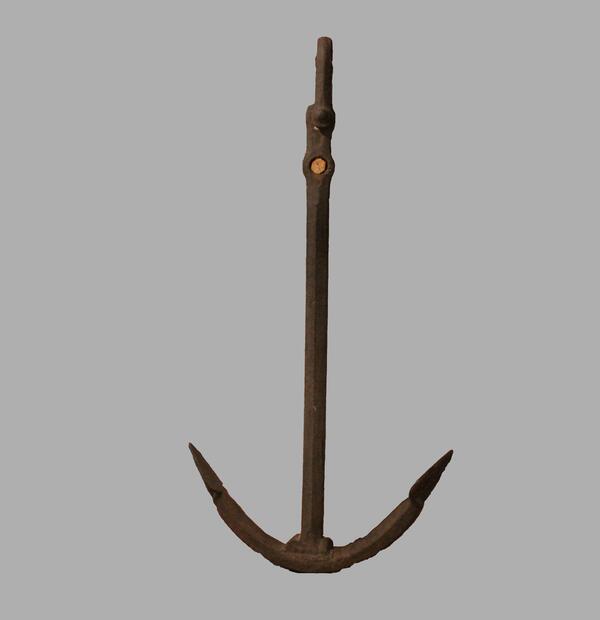Four anchors were found at the bottom of Ishimbay’s Belaya River on separate occasions. One of them is displayed in the Ishimbay Museum of History and Local Lore. It is not known for certain what ship this anchor belonged to. Presumably, it was part of a ship that transported construction equipment, oil, or timber sometime in the 20th century: after the discovery of Ishimbay oil fields, a rafting office was established here to take care of logging and raft timber down to the Ishimbay harbor and the SterlitamAk lumber mill.
During the 19th and the first half of the 20th century, the Belaya River was full-flowing and deep. At the time, ships, steamboats, and barges loaded with salt from Sol-Iletskaya traveled the river through Sterlitamak and Ufa. Oilmen also made use of the river’s past profitability. In 1930, the First Secretary of the Bashkir Regional Committee, Yakov Bykin, suggested to Joseph Stalin to deepen the Belaya River in order to make it possible to export Ishimbay oil to refineries in other cities. The idea was met with approval, and the dredging of the river began. And even though it was soon decided to build a railway in order to meet the city’s transportation needs, a lot of equipment for the transportation of oil along the Belaya River was brought here anyway. Gradually, land transportation completely replaced river transport, and nowadays the Belaya is no longer navigable.
An anchor is a specially shaped device that was cast, forged, or welded to hold a ship, submarine, raft or any other floating object in place by hooking into the ground. The anchor is connected to the floating object by a chain or a cable. The force that the anchor can withstand without moving or breaking out is called holding power. The efficiency of an anchor is measured by its holding power to weight ratio.
The basis of an anchor’s design is a straight shaft, the so-called shank, the upper end of which has a shackle for attaching the anchor to its chain. The lower part is fitted with arms that end in paws with pointed bills. The arms are either fixed to the shank at the trend or are attached with a hinged box. The bottom of the trend is known as the crown. Some anchors are fitted with a stock, which is a rod that is perpendicularly attached to the shank in order to increase traction with the ground.
During the 19th and the first half of the 20th century, the Belaya River was full-flowing and deep. At the time, ships, steamboats, and barges loaded with salt from Sol-Iletskaya traveled the river through Sterlitamak and Ufa. Oilmen also made use of the river’s past profitability. In 1930, the First Secretary of the Bashkir Regional Committee, Yakov Bykin, suggested to Joseph Stalin to deepen the Belaya River in order to make it possible to export Ishimbay oil to refineries in other cities. The idea was met with approval, and the dredging of the river began. And even though it was soon decided to build a railway in order to meet the city’s transportation needs, a lot of equipment for the transportation of oil along the Belaya River was brought here anyway. Gradually, land transportation completely replaced river transport, and nowadays the Belaya is no longer navigable.
An anchor is a specially shaped device that was cast, forged, or welded to hold a ship, submarine, raft or any other floating object in place by hooking into the ground. The anchor is connected to the floating object by a chain or a cable. The force that the anchor can withstand without moving or breaking out is called holding power. The efficiency of an anchor is measured by its holding power to weight ratio.
The basis of an anchor’s design is a straight shaft, the so-called shank, the upper end of which has a shackle for attaching the anchor to its chain. The lower part is fitted with arms that end in paws with pointed bills. The arms are either fixed to the shank at the trend or are attached with a hinged box. The bottom of the trend is known as the crown. Some anchors are fitted with a stock, which is a rod that is perpendicularly attached to the shank in order to increase traction with the ground.



